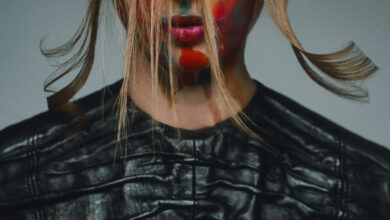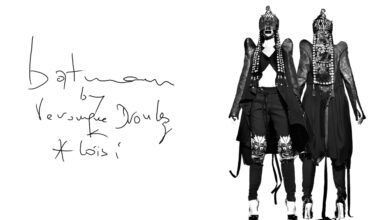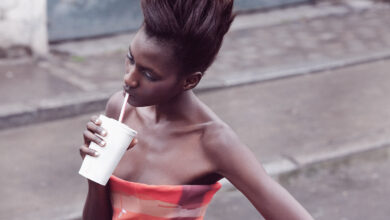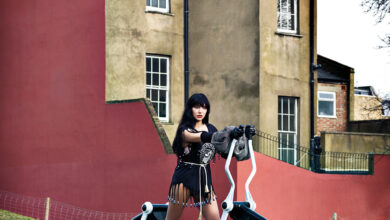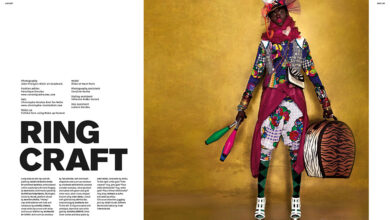FashionZoot agenda
'COATS! MAX MARA, 60 YEARS OF ITALIAN FASHION' MOSCOW
The Max Mara exhibition chronicling the evolution of tastes, trends and textile research in outerwear arrives at Moscow’s State Historical Museum.
Text by Anna Battista
Curated by art and fashion historian Adelheid Rasche from the “Sammlung Modebild – Lipperheidesche Kostümbibliothek” (Fashion Image Collection – Lipperheide Costume Library), the “Coats! Max Mara, 60 Anni di Moda Italiana” (Coats! Max Mara, 60 Years of Italian Fashion) has been on a non-stop global tour since 2006.
 After Berlin’s Kulturforum, Tokyo’s Mori Arts Center and China’s National Art Museum, “Coats!” recently opened at Moscow’s prestigious State Historical Museum.
After Berlin’s Kulturforum, Tokyo’s Mori Arts Center and China’s National Art Museum, “Coats!” recently opened at Moscow’s prestigious State Historical Museum.
The exhibition is divided in different themes – Origins, Fashion and Printed Media, Creativity, Art, Global Images and Production – that reflect key moments in the history of the brand, from its foundation to its connections with new designers developing innovative designs for the brand and with artists and photographers.
One of the best things about this exhibition is that it emphasises important aspects at the core of the Italian fashion industry, such as quality, innovation and high standards of production.
While the opening installation along the main staircase leading to the exhibition chronicles the evolution of the Max Mara coat through 15 different designs, as visitors step into the main room they are brought back in time through a historical display that – including a thin brown coat with a velvet trim from 1908-1909, a late 19th century-early 20th century thick wool coat with tape trimming (borrowed from the State Historical Museum collections) that almost looks Mongolian in its style, a 1960 double face woolcloth coat by Balenciaga with its rounded shoulder silhouette, a 1954 classic tweed design by Coco Chanel and a uniform-like coat by Dior from the early ’50s – analyses various styles of outerwear during the decades.
The “Origins” section opens with images of the founder Achille Maramotti with his workers while classic jackets, coats and suits from the ’50s in black or white wool cloth or camel hair and from the ’60s with Courregesian silhouettes, show how quality and precision were the priorities of the company since it started.
Throughout the decades Max Mara’s designs chronicled the evolution of tastes, trends and textile research and, as time passed, the company collaborated with famous names of fashion such as Dolce & Gabbana, Karl Lagerfeld, Luciano Soprani and Jean-Charles De Castelbajac who all worked at some point in their career for the fashion group.
The part dedicated to the ’70s is therefore illustrated through special collaborations with consultants such as Nanni Strada, Guy Paulin, Soprani and Lagerfeld.
This section features the “Delfi” fitted coat in camel (A/W 1973-74), the “York” jacket (A/W 1971-72) in teased wool cloth and a grey cape in wool and cashmere beaver (A/W 1971-72).
The most interesting designs in this section are the unlined jackets, capes and coats in bright colours including red and yellow and an electric blue light coat from Sportmax’s A/W 1971-72 collection designed by Nanni Strada that shows in its simplicity her early experiments with geometry and flat designs.
The media section also includes sketches from the Sportmax archives and magazines such as Arianna or Gioia with articles mainly focused on innovative products made using new industrial techniques.
Max Mara has for decades always been synonymous with iconic pieces of womenswear such as perfectly cut coats and beautiful knitwear, more similar for their silhouettes, lines and choice of fabrics to artworks than to ordinary garments. This is the main reason why the exhibition also features an “Art” section including experiments carried out by up-and-coming and established artists who, moving from Anne-Marie Beretta’s N. 101801 double breasted coat with kimono sleeves made from a blended wool and cashmere beaver fabric, created new and surreal works.
Among the others there are Marco Mazzucconi’s wool and cashmere beaver coat covered in silicon and characterised by ample shoulders and the slogan “Meglio Armani” (Armani Is Better); Carlo Martinez’s “Vela y Abstracción”, a camel coat reduced to its essential structure; Thais Caballero’s coat made with Vileda sponges (almost an uncanny reference to Joseph Beuys…) and Miwa Yanagi’s 1998 photograph “Paradise Trespassed”.
The “Art” section of the Russian edition of this event also includes images of the Bolshoi dancers posing in Max Mara coats taken by Valery Katsuba.
The “Creativity” section is the largest of the entire exhibition and features a selection of coats and suits: from the “Malta” coat in wool cashmere beaver with its ample lapels (A/W 1983-84) or the “Azzorre” (A/W 1983-84) coat with a cinched waist and full skirt, to Guy Paulin’s “Valdez” (A/W 1984-85) in teased wool and angora and the “Orvieto” model with its distinctive silhouette (A/W 1985-86); from the colourful “Matera” in bright yellow (A/W 2004-05) to more regimented styles such as the uniform-like wool and angora double cloth coat “Moritz” (A/W 2005-06), selected for the Winter Olympic Games of Turin, to the glamorous “Bligny” (A/W 2003-04) in double cashmere and fox fur or the luxurious “Musette” (AW 2006-07) in wool twill but covered in embroideries and sequins.
The more recent “Disco” (A/W 2009-10) coat and dress characterised by fluid lines and the atelier coats “Destino” (A/W 1009-10), in pure camel hair, and “Orleans” (A/W 2010-11), in wool cloth and angora, close this selection.
Visitors interested in discovering further information about Max Mara’s coats will be able to do so through interactive displays that allow to watch videos of the manufacturing plant in Reggio Emilia when pointing at a section of an Anne-Marie Beretta coat.
Photography fans will instead have plenty to see and rediscover on the walls dedicated to the advertising campaigns, including images by Richard Avedon, Sarah Moon, Steven Meisel, Craig McDean, Mario Sorrenti, David Sims, Max Vadukul, Miles Aldridge, Inez and Vinoodh, Bellati, Mert & Marcus and Sølve Sundsbø.
This edition of the exhibition coincides with the 60th anniversary of the Group, celebrated also by a special twin-set coat dedicated to Tolstoy’s heroine Anna Karenina and available from the Max Mara store inside Moscow’s GUM department stores.
“Coats! Max Mara, 60 Anni di Moda Italiana” is at Moscow’s State Historical Museum until 10th January 2012.











